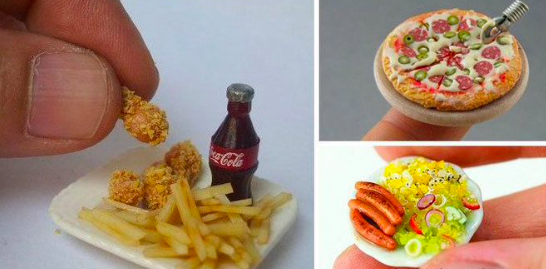Written by Michael Donovan.
Inflation has done it again. While Americans have been bracing for price hikes in just about everything, from gas to groceries, fast food chains have decided to outsmart the system. Instead of raising prices (heaven forbid), they’ve chosen the more creative route: shrinking portion sizes. And by shrinking, I mean portions so small that even Barbie herself would struggle to feel full. It’s as if McDonald’s is now in direct competition with Mattel, offering burgers better suited for dollhouse kitchens than actual humans.
Take your average cheeseburger. Once a symbol of cheap, greasy satisfaction, it’s now been reduced to what can only be described as a glorified cracker with a sliver of cheese. Fries? Oh, you’ll still get the iconic red carton, but the actual number of fries inside seems to have taken a mysterious nosedive. It’s like they’ve decided that three lonely fries are the new definition of “value.”
And don’t even get me started on drinks. What was once a large soda now looks suspiciously like a thimble filled halfway with soda and halfway with crushed ice. Apparently, hydration is overrated. But hey, at least the price hasn’t gone up, right? You can still enjoy the same nostalgic feeling of walking out with a “meal” that barely qualifies as a snack.
A New Era of Hunger: Where Tiny Meals Reign Supreme
Fast food restaurants have essentially turned into high-end minimalist dining experiences. Forget Michelin stars—what we have here is a race to see who can serve the least food for the most emotional satisfaction. You might walk into a Taco Bell for a burrito, but what you’re really getting is a lesson in self-control and portion management. One bite, and it’s gone.
Wendy’s, of course, couldn’t be left behind in this culinary revolution. The famous Baconator? More like Bacon-less. The once mighty tower of bacon, cheese, and beef now resembles a snack-size sandwich for toddlers. It’s like they’re catering exclusively to the kind of people who believe in counting calories by just not eating.
The irony, of course, is that fast food chains are branding this as some sort of victory for consumers. “We’re helping you stay within your budget!” they proclaim, while you stare in disbelief at the single chicken nugget lying limp in its oversized box. It’s almost like they want you to forget that food is supposed to fill you up. Who needs a full stomach when you can have a handful of air and a side of buyer’s remorse?
Barbie’s Dream Meal: Fast Food Gets Even Smaller
But who, you ask, benefits from these new microscopic meal sizes? Barbie, of course. Forget the real world, these portion sizes are perfect for the doll that has it all. She can now enjoy a McTiny burger in her dream house without ever worrying about gaining a single ounce of imaginary weight. Ken, on the other hand, might have to sneak off for a second lunch.
For real humans, though, it’s becoming a frustrating game of “How Small Can It Get?” Fast food companies are toying with the idea of seeing just how much they can shrink a portion before the human eye can’t even detect it. Soon enough, we’ll all be sitting in our cars squinting at our Happy Meals, trying to determine whether we’ve been served an actual burger or just a vague memory of one.
The next evolution in this saga will probably be serving meals in packaging so large and impressive that the food inside is merely decorative. You’ll get a burger box the size of your car, only to open it and find a burger smaller than a quarter. But don’t worry—it’ll still cost $10, and you can always take solace in the fact that you’re contributing to the economy by overpaying for your next “meal.”
Our Take
In a world where inflation is driving up the cost of everything, fast food chains are trying to fool us with clever portion shrinkage. But let’s not mince words: this is bad for the public. Fast food was once the last refuge for anyone looking for a quick and cheap way to feel full—now it’s become a game of who can charge the most for the least.
The shrinking portion size trend sets a dangerous precedent. It’s not about inflation, it’s about testing how little they can serve before people snap and start bringing their own lunch to the drive-thru. And for those of us who remember the good old days of fast food feasts, it’s a sad sight. If this continues, the next generation will grow up thinking that a 2-inch burger is all there ever was.
As for the public’s health? Well, sure, maybe some waistlines will benefit, but so will the profits of companies who seem to think charging full price for half the meal is the ultimate victory. We all lose here—except maybe Barbie.

